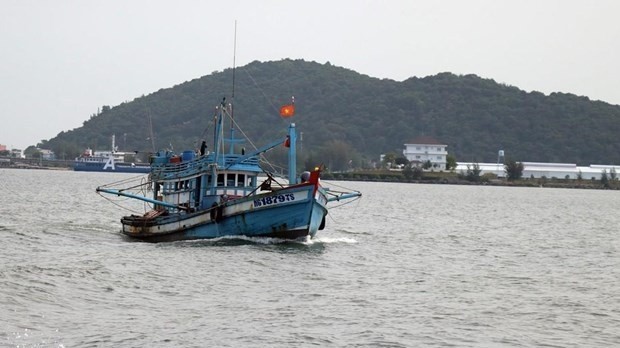The information was heard at a conference to review the two-year implementation of the programme “Vietnam marine product companies commit to combating IUU fishing” held in Ho Chi Minh City on September 25.
Vice Chairwoman of the Vietnam Association of Seafood Exporters and Producers (VASEP) Nguyen Thi Thu Sac said that despite the concerted efforts of the Government, competent ministries and sectors as well as seafood enterprises, it is hard to identify the exact time when Vietnam will regain the “green card”.
Vietnam got the “yellow card” on September 23, 2017 as the country failed to demonstrate sufficient progress in the battle against IUU fishing. Earlier, the Government and the Ministry of Agriculture and Rural Development carried out a wide range of measures to better control fishing and prevent illegal actions.
To date, 62 seafood companies across the country have committed to joining national efforts by purchasing seafood from fishing vessels which have enough exploitation licenses, certificates by fishing ports and fishing journey diaries.
Sac said the installation of GPS and monitoring devices for fishing vessels is a tough mission due to their high costs and poor awareness of local fishermen.
She suggested that the communication work on IUU fishing should be enhanced among fishermen, and proper punishments should be handed out to any violators.
Besides, related authorities should focus on improving oversight of fishing and upgrading the national database on fishing vessels, fishing tools, fishing areas, ports, and fishing certificates.
According to VASEP Deputy Secretary General Nguyen Hoai Nam, seafood is among the five key exports of Vietnam, with an average export revenue of US$7-US$8 billion per year in the past three years. The fishery sector not only creates jobs for nearly 5 million labourers but it also makes contributions to ensuring national security and defence.
The EU is the second largest importer of Vietnamese seafood, just behind the US, and accounts for 17% of the country’s seafood shipments. After the “yellow card” was imposed on Vietnam in 2017, the country’s seafood exports fell 6.5% to nearly US$390 million in 2018, from US$415 million in 2017, Nam said.
In the first eight months of 2019, shipments to the EU remain stagnant, standing at US$251 million. Currently, the EU has dropped to 5th place in the list of Vietnamese top seafood importers.
Local businesses said the “yellow card” has created knock-on effects on exports as, besides the EU, it results a fall in shipments to the US and many other potential markets.
In fact, the “yellow card” has caused EU customers to reduce or refuse to purchase Vietnamese seafood. Since the “yellow card” was announced, all Vietnamese seafood containers have been kept at EU ports for origin examinations. Along with paying high costs for the containers at the ports, unlucky exporters may face another challenge – their products will be returned home.
















